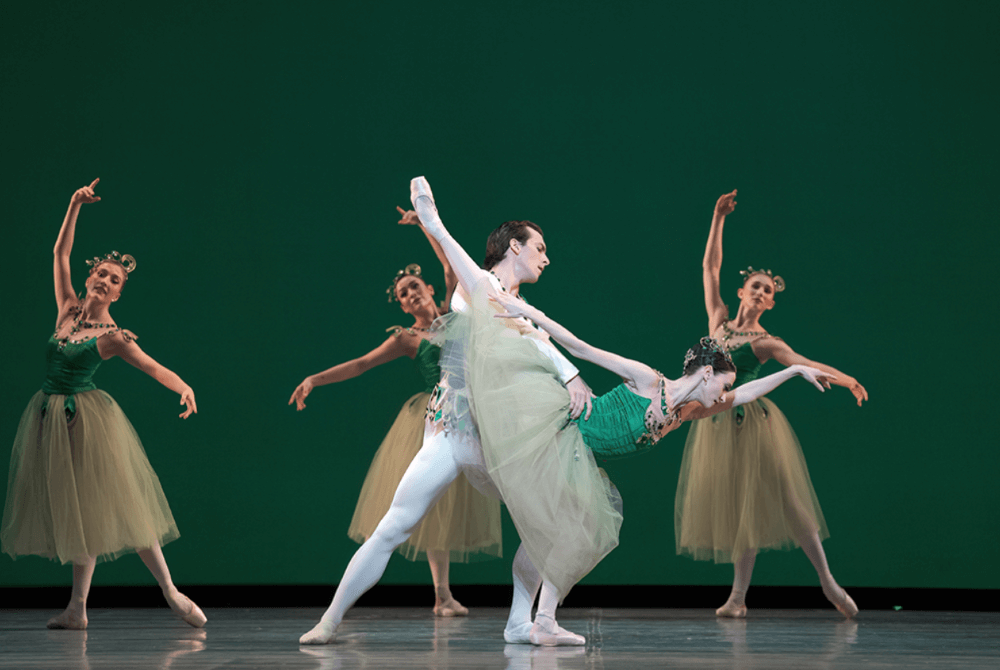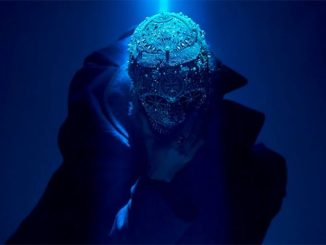George Balanchine’s three-act ballet Jewels debuted in 1967 in New York to widespread critical acclaim. The plotless ballet – considered to be the first modern abstract ballet – features three discrete performances, mini-ballets unto themselves, inspired by the jewels emerald, ruby, and diamond.
The National Ballet’s recent remounting, the first time Jewels has played in full in Toronto since 2006, is a fantastic, shimmering showcase for the corps de ballet, Balanchine’s legendary choreography, and the wonderful music of Fauré, Stravinsky, and Tchaikovsky.

The opening act of Jewels, “Emeralds”, is probably the most striking, if only because of the collective awe when the curtain first goes up and reveals the ensemble of sparkling green-clad dancers against an enormous, green screen-like backdrop. Set to excerpts from Gabriel Fauré’s Pelléas et Mélisande (1898) and Shylock (1889), Emeralds is at its best when the ensemble is on stage, and you get something of the effect of glittering jewels. Of course, Emeralds also features, as do Rubies and Diamonds, opportunities for individual and duet members of the ballet to shine. That Emeralds ends on an unusually downbeat note, the music fading away on a mostly empty stage, also makes it the most intriguing of the three.
Act II, Rubies, is a far jazzier affair, deploying Stravinsky’s Capriccio for Piano and Orchestra (1929) to great effect. Alternatingly intense and humorous, Rubies is the most propulsive of the three jewels, emphasizing the robust and exhilarating aspects of ballet. The one – not insignificant – misstep here is that, rather than the expected red, the background of Rubies is blue, the same blue which later serves as backdrop for the Act III “Diamonds”. Assuming there was no behind the scenes mix-up, we can only assume the Ballet made a conscious, if ill-advised, choice to depart from the expected colour scheme. (For reference, here’s the Bolshoi’s decidedly more scarlet version.)
The finale “Diamonds” is the most classically minded, borrowing from Tchaikovsky’s Symphony No. 3 in D major (1875) for a ballet which almost looks like a spinning, swinging Swarovski chandelier. The unadorned stage (with the aforementioned blue background) is most effective here, providing space for the stage-filling ensemble to dance in (almost) perfect sync. Though some scholars consider Symphony No. 3 to be one of the composer’s weakest, it works well for this latter third of Jewels, the act most consciously inspired by classical works such as Tchaikovsky’s own Swan Lake.
While the various jewels are often performed on their own, the National Ballet has afforded us a unique opportunity to see all three as they were originally intended. Absent a plot, or really any set decoration, it’s not quite as accessible as some other works, but still remains an incredible showcase.
***
For more on the National Ballet, including the recent announcement of its upcoming 2024-25 season, click here.



